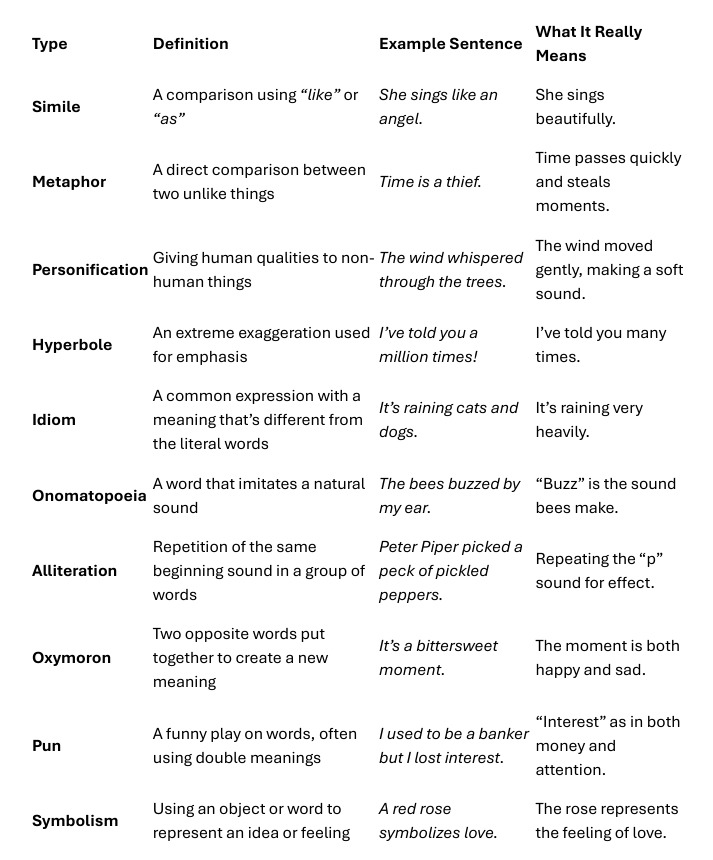More Than Words — Discovering the Beauty of Figurative Language
As you learn English, you’ll soon discover that not everything people say should be taken literally. Sometimes, words paint pictures, express emotions, or deliver powerful messages that go beyond their dictionary meanings. This creative and expressive use of language is called figurative language, and it’s one of the most colorful and meaningful parts of English communication.
Imagine someone says, “I’m feeling under the weather,” or “Her smile was as bright as the sun.” These phrases don’t mean exactly what the words suggest — they use comparison, exaggeration, or imagination to make language more vivid and alive. That’s the magic of figurative language. It turns simple sentences into stories, facts into feelings, and ideas into unforgettable expressions.
Whether you’re reading a poem, watching a movie, listening to a song, or having a friendly conversation, figurative language is everywhere. It helps you:
🖼️ Visualize ideas and emotions more clearly
💬 Understand idioms and common expressions
🧠 Think more creatively and critically
✍️ Write with more style and personality
Learning figurative language is not just about memorizing phrases — it’s about learning how native speakers think, feel, and play with words. Once you begin to recognize metaphors, similes, idioms, hyperbole, and personification, English will become not only easier to understand, but also more fun and expressive to use.
In this lesson, we’ll explore the most common types of figurative language, see how they work in real examples, and practice using them so you can bring more color and character into your English skills.
📘 Chart: Common Types of Figurative Language


🧠 Quick Tips for Learning Figurative Language
Don’t translate it word-for-word — think about the meaning behind it.
Try to find these expressions in songs, stories, or shows.
Practice using them in your own sentences and writing.
Learn common idioms and metaphors one by one — and use them often!
